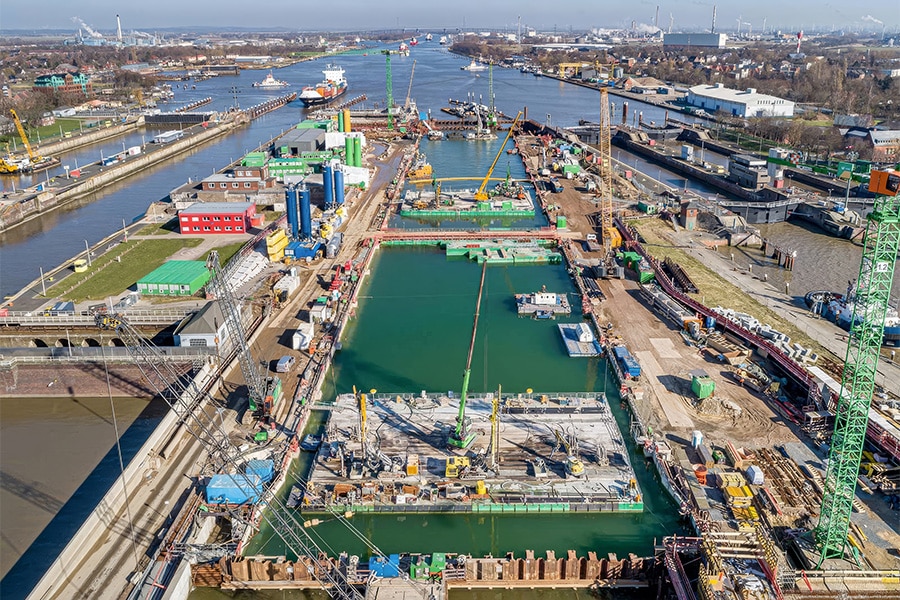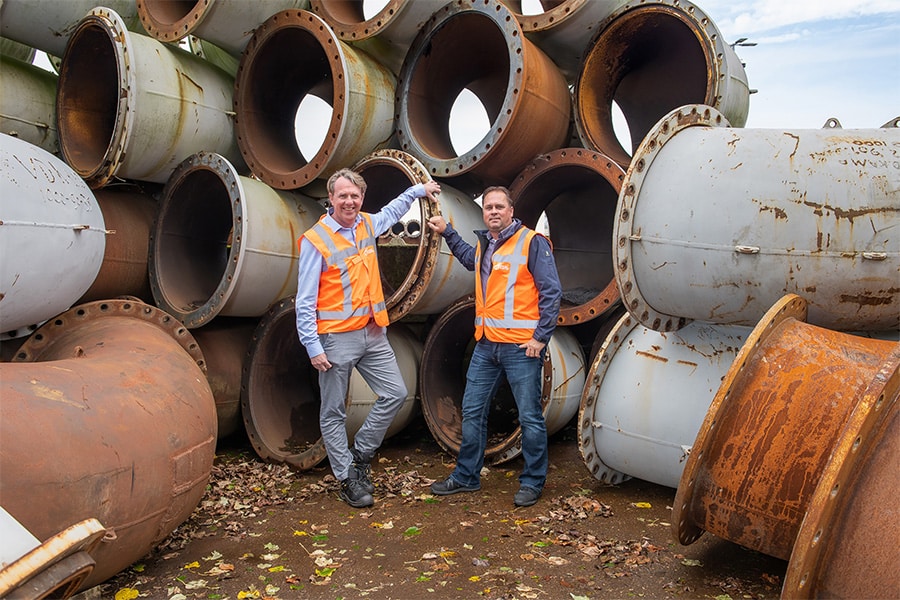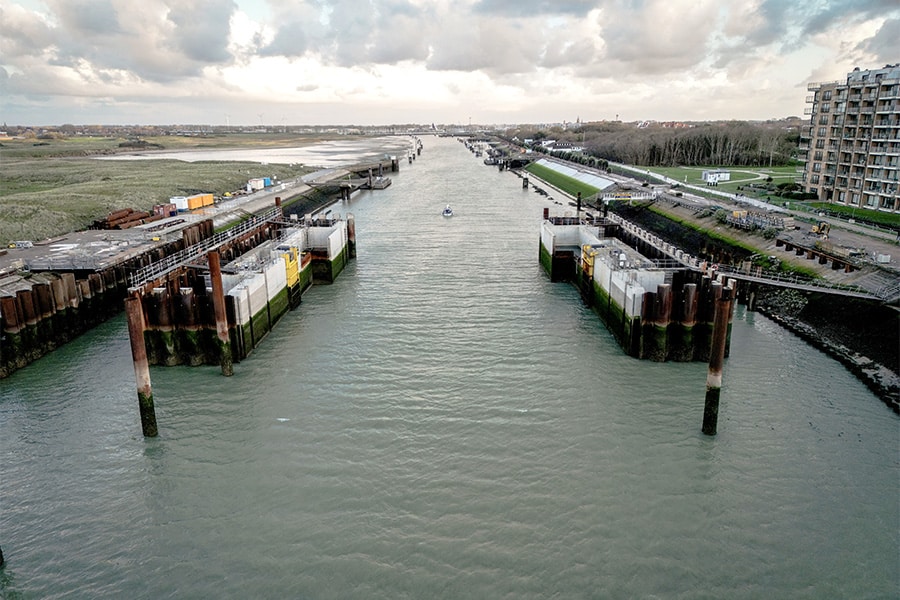
Lots of steel for construction Storm Surge Barrier Newport
Storm surges are one of the greatest natural threats in the North Sea region. To protect the coast and the hinterland from heavy storms, the Flemish Government approved the Coastal Safety Master Plan in 2011. This plan includes the construction of a storm surge barrier at the mouth of the Yser in Nieuwpoort. After thorough studies, a horizontal sector slide with a passage width of 38 meters was chosen. ArcelorMittal was engaged to supply approximately 7,300 tons of tubular piles and 2,900 tons of sheet piles. The newly developed AM-SIS proximity switches were also used here for the first time.
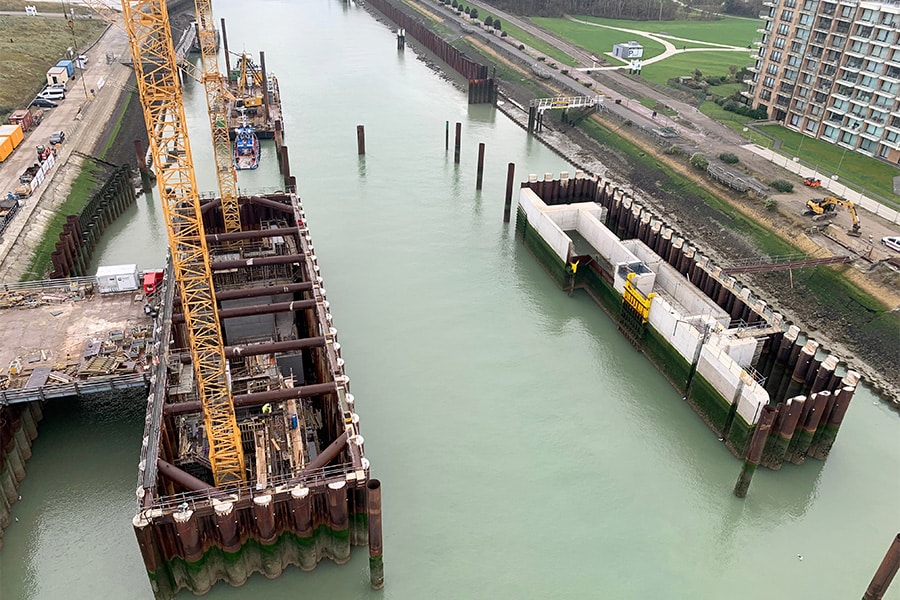
The movable steel barrier rotates between two cast-iron shafts anchored in concrete abutments connected to the banks of the Yser. "Think of it as a half cylinder that can be moved to a vertical position to turn the sea water. When parked, the barrier is sunk into a concrete sill at the bottom of the IJzer," explained Johan Branders, Technical Sales Engineer at ArcelorMittal. "Since the project started in 2018, a lot of steel has already gone in. We have supplied the steel to contractor THV Herbosch-Kiere - Jan De Nul to make the concrete abutments, for the quay walls, for the current-conducting walls, the bypass sewers and the underpass screen."

Proximity switches
The two construction pits for the abutments were made of combi walls. "Each construction pit consisted of 53 pipe piles Ø1420 x 21.6 mm in S460MH of 31.5 meters long with intermediate sheet piles AZ28-700 of 26.5 meters long," Johan clarified. "Due to the high water pressure on the combi walls, the C6 locks of the pipes and the middle locks of the sheet piles were filled with the waterproofing product Beltan Plus." In this project, the AM-SIS proximity switches were tested for the first time during sheet pile driving. "The test was successful, the eight sensors installed gave a reliable and constant signal that the sheet piling remained in the lock during installation. This was also verified with Dixeran™ sensors attached in the combi piles for verification."
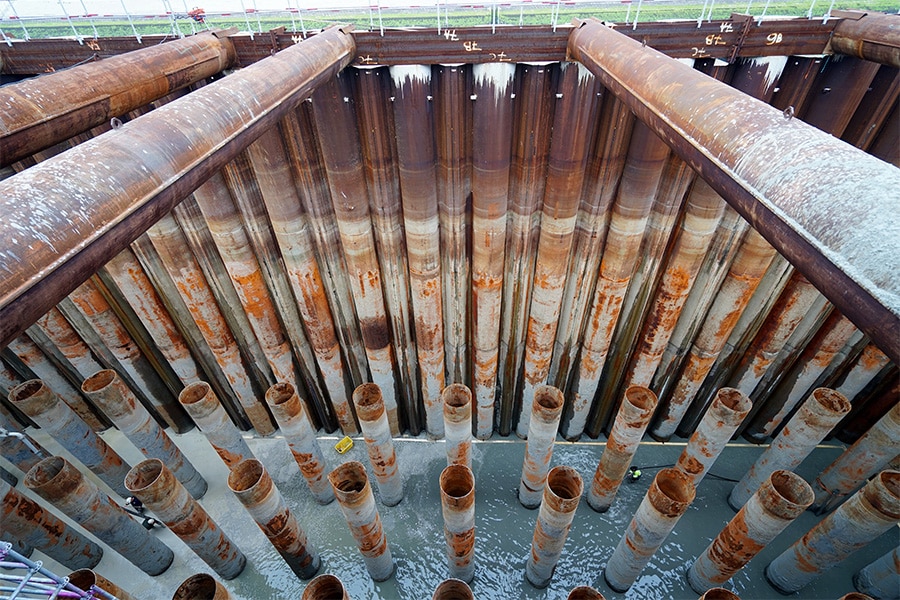
Stamp frame
A further 42 tubular foundation piles Ø1270 x 16 mm in S355J0 of 12.9 meters long were installed in each pit with an over-length of 8.6 meters to apply them with a vibratory block remaining above the water level. On top of the combi walls, an outrigger frame was installed using Ø1067 x 14 mm pipes as outriggers and HEM700 shoring to distribute the large water pressure on the tub to the combi wall after dredging. "Here we were dealing with a water column of 17.9 meters on the tub at high tide. And that's still quite a lot," Johan said.
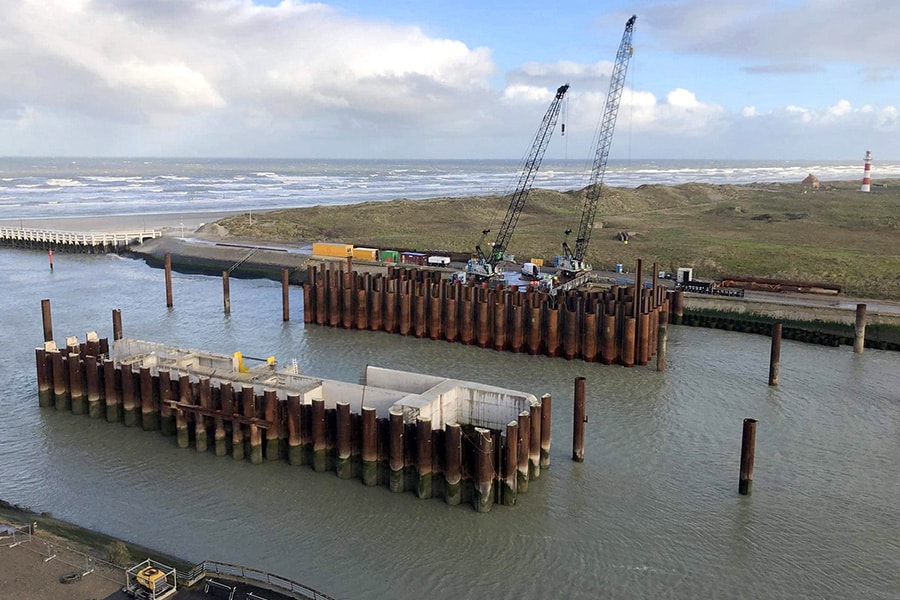
Reuse and repurchase
After dredging the construction pit, a 2-meter-thick layer of underwater concrete was first poured. Then the construction pit could be drained to level -12.6 meters TAW (the reference height against which height measurements are expressed in Belgium, ed.). Johan: "Then the foundation piles were burned off at level -12.6 meters TAW and a concrete floor slab of 3 meters thick was poured. The burned piles were reused to make the foundation piles of the second construction pit. We bought back the over-length of the second pit as ArcelorMittal. Then, in April 2022, the 4,500-ton concrete sill could be installed between the two abutments."
All in all, it is an extensive project for ArcelorMittal. "The first bulk delivery dates back to 2018 with foundation piles and combi walls. After that, we made quite a few partial deliveries for the quay walls, stream guiding walls, a construction pit for the bypass sewers, an underflow screen and dolphins. The project will continue until 2025."
Heeft u vragen over dit artikel, project of product?
Neem dan rechtstreeks contact op met ArcelorMittal Projects Europe B.V..
 Contact opnemen
Contact opnemen

